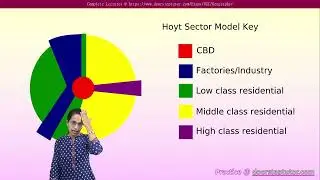Lakhpati Didis, Jugaad Innovations, Cultivating Progress, Digital Technology: Kurukshetra July 2024
IAS Preparation: https://www.doorsteptutor.com/Exams/IAS/
NET Preparation: https://www.doorsteptutor.com/Exams/UGC/
Exam Preparation - https://www.doorsteptutor.com/Exams/
Masters Level topics: / testprep
NCERTs: / examrace
Hindi Lectures: / examracehindi
Our Websites
https://www.examrace.com
https://www.doorsteptutor.com
https://www.flexiprep.com
https://www.examtestprep.com
https://www.jobduniya.com
Call: +91-9998008851
Email: [email protected]
#kurukshetra #kurukshetranalysis #upscpreparation #iasprelims2024 #howtoqualifyias #iaspreparationstrategy #doorsteptutor #netpaper1 #ugcnetpreparation #howtoqualifyJRF #iasmains
The Current Landscape
Rural India has experienced a significant reduction in poverty in recent years.
According to the National Multidimensional Poverty Index (MPI), poverty rates dropped from 32.59% in 2015-16 to 19.28% in 2019-21.
This improvement is credited to targeted government initiatives such as the Mahatma Gandhi National Rural Employment Guarantee Act (MGNREGA), Pradhan Mantri Awaas Yojana-Gramin (PMAY-G) and the Saubhagya Scheme for rural electrification.
Despite significant advancements, challenges remain. Rural areas continue to face inadequate infrastructure, limited access to quality healthcare and educational disparities.
Approximately 35.5% of children under five suffer from stunted growth due to malnutrition.
Additionally, the rural unemployment rate was 2.4% in 2022-23 highlighting the need for more robust job opportunities.
However, these challenges also create opportunities for innovation.
The rise of digital technology, renewable energy solutions, and advancements in agricultural practices are transforming rural economies.
The surge in internet and mobile connectivity with 751.5 million internet users and 462 million YouTube users in India as of early 2024 is bridging the connectivity gap and creating new opportunities for education and economic activities.
Renewable Energy: Powering Rural India
Renewable energy is emerging as a key element in empowering rural India.
With substantial advancements and policy support, the adoption of renewable energy solutions is transforming rural areas by providing reliable power, creating jobs and promoting sustainable development.
Vision for a Transformed Rural India
India's pursuit of a renewable energy-powered rural landscape is both ambitious and attainable, fueled by the combined efforts of policy initiatives, technological advancements and community involvement.
The vision for a transformed rural India includes economic growth, environmental sustainability and an improved quality of life for its rural inhabitants.
The vision emphasizes upon:
Economic Empowerment through Renewable Energy
Environmental Sustainability and Climate Resilience
Enhancing Quality of Life
Policy and Institutional Support: Catalyzing Innovation
The swift progress of renewable energy in rural India is supported by strong policy frameworks and institutional backing, which are essential for driving innovation and ensuring sustainable development.
The Indian government has introduced numerous initiatives and policies to promote the growth of renewable energy in rural areas aiming to enhance energy security, reduce carbon emissions and stimulate economic development.
The Ministry of New and Renewable Energy (MNRE) has led the charge in promoting renewable energy through a variety of schemes and policies. A significant initiative is the Renewable Purchase Obligation (RPO), which requires designated entities to source a specified percentage of their total energy consumption from renewable sources. The RPO targets are set to gradually increase, aiming to reach 43.33% by 2030. This policy ensures a consistent demand for renewable energy and stimulates investment in the sector.
The PM-KUSUM scheme (Pradhan Mantri Kisan Urja Suraksha evam Utthaan Mahabhiyan) aims to supply farmers with solar-powered irrigation pumps, decreasing their dependence on grid electricity and diesel. This initiative not only promotes clean energy but also helps lower operational costs for farmers, thereby boosting their income.
Promotion of renewable energy projects through:
Financial Support and Incentives
Institutional Support and Capacitive Building
International Collaboration and Leadership
Challenges Faced
Widespread adoption of renewable energy in rural areas
Grid Integration and Flexibility
Financial Barriers
Technological and Infrastructure Gaps
Integration of various renewable energy sources
Policy and Regulatory Hurdles































